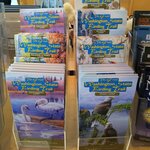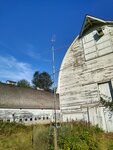

In response to my recent columns about migration, a reader asked how birders and ornithologists learn about bird migration. It’s all about watching for many hours over many years. Mostly, that’s called “field work.”
The first knowledge came from finding North American breeding birds in their wintering areas. This information has accumulated for over a century, and ornithologists now have a reasonably precise idea of most species' ranges.
Where do our specific birds go? One way to solve this puzzle is bird banding. This system started in 1920 and is run through the US Geological Survey. Uniquely numbered bands on the birds' legs and with the hope that at some point in the future, the bird will be encountered again, and thus provide some information about where it came from and where it went.
Years ago, while tending bluebird boxes on Joint Base Lewis McChord, I placed over 4,000 bands on birds. I recovered many bands on JBLM in the following year, and a few were found nearby. But of the 4,000, only three were recovered in winter (two on the Washington Coast and one in Oregon). We inferred from these recoveries that JBLM bluebirds likely wintered in coastal areas of the Pacific Northwest, but with so few recoveries, we could not be certain.
As you might imagine, tagging individual birds, especially juveniles, in nesting areas is relatively easy, but follow-up recovery is rare. I was thinking about this banding dilemma as I visited our Billy Frank Jr. Nisqually National Wildlife Refuge this past weekend when I took visitors from back east on a Sunday afternoon walk at “our” refuge.
(That's my favorite thing to do with folks from out-of-town. The interpretative signs and the small visitors center do a great job of telling the Nisqually story, which is also a big part of my career with the Nisqually Indian Tribe.)
The refuge birds were pretty quiet, and the wetlands were almost dry. The wildlife highlight of the visit was three very well-fed deer, two Great Blue Herons, and seals out on the mudflats.
But at the Twin Barns there was something new, a radio tower and a new interpretative sign. Late last year, a new method for monitoring wildlife, called a Motus Tower, was installed at the refuge. This is a new system for tracking all wildlife migration, not just birds, that was developed several years ago in Canada.
The Motus Wildlife Tracking System is a collaborative network that allows researchers to automatically track individual birds, bats, insects, and other species using automated radio telemetry. Individuals are tagged with a very small nanotag that broadcasts a specific signal for that tag. These signals are picked up at tracking towers, such as the one at Nisqually. You can learn more about the program by clicking here.
This program is in its infancy, but a brief look at the Nisqually station data hints at how useful it might eventually be. There is a large-scale Swainson’s Thrush project in British Columbia. Already the Nisqually station is documenting that numerous individuals from this breeding population migrate through Nisqually while travelling back and forth to their wintering grounds in Central and South America. This is new knowledge. Another project, this time on Vancouver Island, is tagging Saw-Whet Owls. Last fall two of these owls arrived at Nisqually. Who knew?
And it’s not just birds. Last November, a Hoary Bat, tagged in California, was detected by the refuge Motus Tower. For bat researchers, this was headline news.
This is a long-term project and likely will yield many additional insights as more of the small nanotags are placed in circulation. Perhaps one of our local agencies or organizations will initiate a nano-tagging project.
While visiting the visitors center of Billy Frank Jr. Nisqually National Wildlife Refuge, I noticed something else of interest: They have a whole wall of bird books for sale – everything you could want to enhance your bird watching and identification. Also, they have the Seattle Audubon Birding Trail maps that are just what one needs to find good birding areas throughout the state. The visitors center is open Wednesday-Sunday, from 9:00 a.m. to 4:00 p.m.
George Walter is environmental program manager at the Nisqually Indian Tribe’s natural resources department; he also has a 40+ year interest in bird watching. He may be reached at george@theJOLTnews.com
Comments
No comments on this item Please log in to comment by clicking here